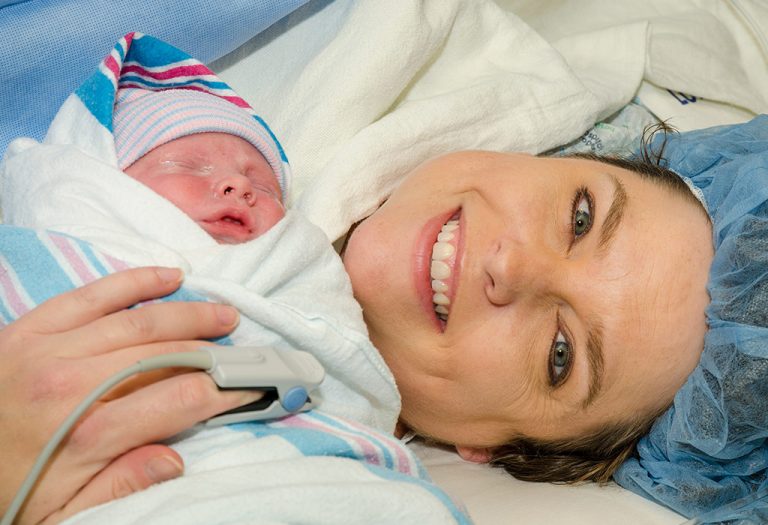Making a Birth Plan: Purpose, Benefits & What to Include
To make a birth plan, you don’t require a lot of research. All that is necessary is to realise and understand what you want and what your needs and preferences are during and post-delivery, and thereafter organise it all together and write it down.
To pen down a birth plan, specific guidelines need to be followed. These guidelines help in planning what a mother wants during her labour, and this involves understanding whether a mother wants a normal delivery, a C-Section or an epidural, who she wants or does not want during her labour in the delivery room, and how long does she want to breastfeed her baby, when does she want to feed her baby after birth etc. All information one thinks is necessary and important should be listed while making birth plans. Keep reading to know a birth plan’s purpose, benefits, and essential components.
What Is a Birth Plan?
A birth plan is a record or a document in which the expectant parents state their preferences for the labour and after delivery process. It is also a way to prepare them for the physical and emotional aspects of the birthing process. It also serves as a vehicle for communication between the partners, their care provider and the hospital staff prior to labour and the childbirth process. The document also gives an insight into the other options that could be put practised in case an unexpected situation arises (2) (3).
Why Should You Create a Birth Plan?
A birth plan allows the caregivers get an idea of what you prefer and expect during your labour and delivery. It is a list of the expectant parents’ expectations and desires. Here are the reasons why you should have one (4) (5):
- Natural birth: You would want everyone in the labour room to know that you want a normal delivery and not an epidural one, without the help of any pain-free drugs. Creating a birth plan will enable you to do this.
- Means of communication: It will communicate your wishes and expectations clearly. It helps you to convey to your doctor or your midwife that unless there is some complication, the delivery should go as per the birth plan drafted by you. In hindsight, it also gives a chance to your health care providers to analyse and brief you about the possibilities post reading your documented plan.
- Preparation: Drafting a birth plan also shows what you are prepared for. You can create this plan after going through several Blogs, talking to friends who are mothers, talking to health care providers and also reading several books about pregnancy and childbirth. Doing so may not make your delivery easy but it will give you a greater sense of comfort while going into the labour room.
- Other options: Most women want a normal delivery but what if that is not possible? What if you require medication to induce labour or you have oedema in the cervix which stops it from opening up and you are writhing in pain? So having “just in case” options in your birth plan, is a wise move.
- Gathering knowledge: Writing a birth plan requires you to acquire knowledge about labour, childbirth, hospital or the health centre environment, medical equipment (which may be used during childbirth) and medications. In the process, you also get to know about everything that is related to having a baby.
- Gives clarity: At a time when the contractions have started and you are in pain, just opening up the birth plan will give you an idea and help you to decide as to what should be done next.
- Role of your partner: Just as it took both you and your partner to make a baby, in the same way, both of you can create a birth plan together. In the process, your partner will get to know all about labour and childbirth and get a feeling of being a part of the whole journey and the experience.
When Should You Make a Birth Plan?
There isn’t a strict timeline for creating a birth plan, but it’s important to give yourself enough time to consider your preferences and discuss them with people, such as your partner, doctor, or midwife before labour begins. Having your birth plan ready well before your due date ensures you’re prepared for labour, even if your baby arrives earlier than expected. If you have cultural traditions or specific preferences, these should also be included in your plan to ensure they are respected.
Consulting your doctor about what to include is essential, as the details of your birth plan may vary depending on your chosen birthing location and any specific health considerations for you or your baby.
The Kind of Research to Do Before Writing a Birth Plan
Doing a bit of research before drafting a birth plan is a good thought. You can do so in the following ways.
- Join an antenatal class: An antenatal class is a good place to interact and ask questions to the various caregivers and health professionals about different aspects of pregnancy, labour and delivery. It’s a place where you can meet other moms-to-be and share your pregnancy woes, your experiences and learn new things from them.
- Talking to people: Interacting with people and women who have given birth at the hospital you are going to, will give you an insight into what your experience could be like. Also talking to other women in pregnancy forums on the internet could also give you an understanding of labour and childbirth. However a word of caution, “never delve too much into it because every woman is different and so is their pregnancy”.
- Talking to friends: Ask friends who have recently had babies for inputs on what they had included in their birth plan and what they had excluded. They could also help you to understand what you should expect at the time of childbirth.
- Talking to your partner: Talking to your partner and asking him what role he could provide during your labour and delivery is important before drafting a birth plan. It will also give you an insight as to how he would help you during your labour and delivery process.
- Reading: Reading about birth and birthing options could help you decide on what and how you want your labour and delivery to be. It will help you decide and choose options according to your likes and necessity.
- Prepare for the worst: Your delivery may not go according to how you have envisioned it. At times, during childbirth, you may need some kind of intervention or an emergency caesarean, if your health or baby’s health is at risk. Therefore having a flexible birth plan is important.
How to Write a Birth Plan?
Now, you may wonder how to make a birth plan. Every woman’s birth plan is different because what goes in it depends on what is important for her. It should be as simple and concise as possible. Your partner and family members should have full knowledge about what you have wished for in the birth plan (some hospitals and caregivers may try to override the birth plan instead of adhering to it) (2).
What Should Be Included in the Plan?
A birth plan should be as brief as possible and should include all the things that are important to the expectant mother. Here are a few things to include in the birth plan to make it good and legible (3) (7).
- Your positions during labour and birth should be included in case you feel you will be more relaxed and comfortable in a certain way.
- It should state whether you will have a labour coach and who will it be.
- Stating other pain relief options other than the medicated ones during your labour such as breathing techniques and massages should be mentioned.
- Who you would want and do not want during the time of delivery in the labour room.
- Whether you want people to visit you or not, right after your delivery.
- Whether you want somebody to videotape your delivery and whether the hospital allows it or not.
- If you want some soothing music during your labour/delivery process.
- Your concerns and fears.
- If you would like to move during labour?
- Whether you want an epidural delivery or a drug free delivery?
- Whether being induced is okay with you?
- Delivery preference like whether you want a Vaginal delivery, a C – section, vacuum extraction or a forceps delivery?
- Under what circumstance should your doctor perform C – section?
- Positions for labour and birth.
- Do you want to wear your own clothing while in labour and during delivery?
- Do you want to bank the cord blood?
- How soon or later would you and your partner get to hold the baby after birth?
- When would you first feed the baby?
- Would you like to nurse your baby or bottle feed? Do you learn how to breastfeed?
- Would you like your baby to sleep with you or in the nursery?
- If your baby is a boy, do you want him to be circumcised? If so, when?
- You could also mention whether you want your partner or the midwife to cut the cord instead of the doctor or the nurse. You could also ask for some drugs which would expel the placenta quickly or for it to come out on its own.
What if You Have Any Special Requirements?
Special requirements should always be put down on the birth plan. In case of a special family or religious custom during the baby’s birth, there should be a mention of it in the birth plan. If one has a disability, it should be mentioned in the birth plan along with the kind of help required.
One must also mention if English or any other language that is spoken at large (in that particular place) is not your first language and whether you require an interpreter. Also mentioning any special diet during your stay at the hospital, if in case you have one, is necessary.
What Happens After Writing a Birth Plan?
After you have finished mentioning all your preferences and your aversions in your birth plan template, your doctor, the caregivers and the other hospital personnel will know what you are expecting during your labour and childbirth. In case they feel something in your birth plan is too rigid, they may tell you what could be the outcome of it (4).
Birth Plan Template
There’s no one-size-fits-all approach to writing a birth plan, as every expectant parent’s needs, preferences, and circumstances are unique. Some birth plans may focus on the essentials, while others are more detailed. To help you create a personalised birth plan checklist, here’s a simple template you can use. You can choose the options that resonate with you and omit the ones that don’t (1).
Basic Information:
- Name: ________________________
- Support person’s name: ________________________
- Hospital/Birthing Centre: ________________________
- Due Date/Induction Date: ________________________
- Doctor/Midwife’s Name: ________________________
Before Labour:
- Health considerations to note: ________________________
- Planned delivery method (e.g., vaginal, C-section): ________________________
- My birthing team will include: ________________________
During Labour:
If medically possible, I would like to:
- Eat and drink during labour
- Move freely and change positions
- Use tools like a birthing ball or birthing tub
- Have music, dim lighting, or aromatherapy
- Other: ________________________
Medical Interventions:
I prefer (circle or list):
- Intermittent or continuous fetal monitoring
- Membranes to remain intact or ruptured
- Pain relief options (e.g., epidural, breathing techniques, acupressure): ________________________
Delivery Preferences:
- Desired delivery positions: ________________________
- Who will cut the cord: ________________________
- Additional requests: ________________________
In Case of a C-Section:
If needed, I would like:
- To stay awake and aware
- Use clear drapes to see the baby’s birth
- To hold my baby as soon as possible
- To begin breastfeeding in recovery
Newborn Care:
For my baby, I prefer:
- Immediate skin-to-skin contact
- Breastfeeding or formula feeding
- Cord blood banking or donation
- Circumcision for a boy: Yes/No
- Vitamin K and eye treatment for baby: Yes/No
Additional Notes:
- Religious or cultural traditions to include: ________________________
- Any other requests or considerations: ________________________
FAQs
1. Is a birth plan necessary for everyone?
While not mandatory, a birth plan is beneficial for most expectant parents. It provides clarity and ensures everyone involved in your care is on the same page, especially if you have specific preferences or cultural practices (6).
2. Can my birth plan change during labour?
Yes, flexibility is key. While a birth plan outlines your preferences, unforeseen medical needs may require adjustments. Discussing scenarios with your doctor can help you prepare for such situations.
3. How detailed should a birth plan be?
Your birth plan can be as simple or detailed as you like. Focus on essential aspects such as pain management, interventions, and newborn care. Avoid overly rigid instructions, as flexibility ensures better alignment with medical recommendations.
Having a good birth plan is certainly a good idea when it comes to one of your life’s most important milestone, that of being a mother. However, one cannot be too rigid while framing one. Expectant mothers need to be flexible and keep their options open. This would not only help in having a safe delivery but also a good one.
References/Resources:
1. Sample Birth Plan Template; American College of Obstetricians and Gynecologists; https://www.acog.org/womens-health/health-tools/sample-birth-plan
2. How to make a birth plan; NHS; https://www.nhs.uk/pregnancy/labour-and-birth/preparing-for-the-birth/how-to-make-a-birth-plan/
3. Birth Plans; Nemours KidsHealth; https://kidshealth.org/en/parents/birth-plans.html
4. Making your birth plan; Tommy’s; https://www.tommys.org/pregnancy-information/giving-birth/making-your-birth-plan
5. Ghahremani. T, Bailey. K, Whittington. J, et al.; Birth plans: definitions, content, effects, and best practices; American Journal of Obstetrics and Gynecology; https://www.sciencedirect.com/science/article/pii/S0002937822022724
6. Your birth plan; March of Dimes; https://www.marchofdimes.org/find-support/topics/planning-baby/your-birth-plan
7. What to include in your birth plan; NHS; https://www.nhs.uk/start-for-life/pregnancy/preparing-for-labour-and-birth/what-to-include-in-your-birth-plan/
Transition Phase of Labor
Preparing for Labour and Delivery
Tips for Easy Labour and Delivery
Complications during Labour and Delivery
Was This Article Helpful?
Parenting is a huge responsibility, for you as a caregiver, but also for us as a parenting content platform. We understand that and take our responsibility of creating credible content seriously. FirstCry Parenting articles are written and published only after extensive research using factually sound references to deliver quality content that is accurate, validated by experts, and completely reliable. To understand how we go about creating content that is credible, read our editorial policy here.


























